
I created this flowery snowflake while The Lizard drove us and our mountain bikes to the Columbine Mine trailhead for a big training ride, and I created it specifically to decorate a green floral batik dress I designed.
The snowflake doesn't look anything like a columbine, Colorado's state flower, but I love the name, and I enjoy naming my snowflakes after significant events/places, so Columbine Mine is the name this snowflake gets.
Columbine Mine is located on the flanks of Quail Mountain (another very cool name!), which sits at the foot of 13,940-foot centennial peak Mount Hope. The name Mount Hope has special significance for me because so many of my family members and friends have had or are going through chemo due to cancer. But that's another story for another snowflake another day. Suffice it to say you'll eventually be seeing Mount Hope on a future Snowflake Monday.

Columbine Mine is one of the toughest segments of the Leadville 100 mountain bike race. (Powerline is the most difficult, but I'm not naming a snowflake after that!) Now that I've ridden a portion of the Columbine Mine climb, I have even more admiration for the racers who tackle it each year.
In both the 2009 and 2010 Race Across the Sky movies, which document the Leadville 100, long strings of riders are shown pushing their bikes up the steep alpine trail to Columbine Mine, refusing to give up. In the 2010 movie, 50-year-old Grace Ragland describes being diagnosed with multiple sclerosis at the age of 18 and then is shown riding up that tough Columbine Mine climb until she can't keep the bike upright any longer. She cheerfully dismounts and begins pushing her bike. Straight up.
"It's easier to smile than it is to frown," Ragland optimistically explains, smiling, as she shoves her bike up the steep, rocky mountain. "When you frown, you've defeated yourself."
And then she takes a deep breath (at an altitude of about 12,000 feet, where there is no air) and softly exclaims, "Whee!"

The Leadville 100 became more than just a mountain bike race in 2007 when not-yet-disgraced Tour de France winner Floyd Landis competed and was beat by local champion Dave Weins. (Landis later was stripped of his Tour de France title for doping.) In 2008, Lance Armstrong competed in the Leadville 100, and Weins beat him by two minutes. The following year, Armstrong unretired from cycling and returned to the Tour de France, which he followed up with a tour de Leadville, finally ending Wein's six-year reign as King of one of the oldest mountain bike marathons. (In my eyes, Dave Weins is still the uncontested winner.) Armstrong finished the last few miles with a flat rear tire (and chunked his empty C02 cartridge into the wilderness after an unsuccessful attempt at fixing his own flat!!!). Last year, Tour de France podium finisher Levi Leipheimer took the crown. (In the years since I originally wrote this blog post, we’ve discovered many of the American Tour de France cyclists of that era were not clean.)
This year, Weins was successful in the Leadville 100 lottery, which all riders, with the possible exception of Armstrong, must endure in order to compete, but announced the week before the event he would not be participating.
Todd Wells, the current US cyclocross, cross country and short track champion, went on to win this year's race over the weekend. He came in third last year, even though he and Levi Leipheimer collided about 40 miles into the race. Wells' wheel was trashed, and 53-year-old teammate Ned "Deadly Nedly" Overend gave up one of his and still managed to come in 30th. (Ned is very vocal about cycling cheaters, and rightly so.)

Leadville is all about digging deep, endurance and perseverance.
Here is one volunteer's excellent report of the affect of altitude on a flatlander, stuffing packets for the 2006 Leadville 100 and then manning the Columbine Mine aid station during the race. She included wonderful photos of the historical landmark for which this snowflake is named.
I wasn't able to learn why the mine received this name, so I can only speculate it was because flowers were plentiful and enjoyed. When I researched Columbine Mine, all I could come up with were events not worthy of snowflake design or flower names, so I'll just say the columbine is one of my favorite flowers, and it's a thrill to have a treasured snowflake with such a beautiful name.
Because, according to racers, the Leadville 100 is beyond long and includes the Columbine Mine, I am naming the lace edging I created to coordinate with the snowflake after the mountain bike race. The hemline felt a hundred miles long while I was working the five rows of crochet along the edge. You may read about the dress here. I had sort of a crochet race of my own to finish the dress the last couple of weeks because I couldn't wait to wear it. Now that it's finished, I feel as if I've completed a finger marathon!

Special thanks to The Lizard for this fun photo shoot.

This is all I had left of a 300-yard ball of hand-dyed thread from Sara's Colorwave Yarn after 2.5 motifs and the lace edging.
You may do whatever you'd like with snowflakes and edging you make from these patterns, but you may not sell or republish the patterns. Thanks, and enjoy!

Columbine Mine Snowflake
Finished Size: 5.5 inches from point to point
Materials: Size 10 crochet thread, size 8 crochet hook, empty pizza box, wax paper or plastic wrap, cellophane tape, glue, water, glitter, small container for glue/water mixture, paintbrush, stick pins that won't be used later for sewing, clear thread or fishing line
Columbine Mine Snowflake Instructions
Make magic ring.
Round 1: Ch 2 (counts as 1 dc), 11 dc in ring; sl st in 2nd ch of starting ch 2. Pull magic circle tight.
Round 2: Ch 3 (counts as 1 dc), 1 dc in same ch as sl st, [sk 1 dc, in next dc work (2 dc ch 3, 2 dc)] 6 times, omitting last 2 dc and last 2 ch of final repeat; ch 1, 1 dc in 3rd ch of starting ch 3 to form 6th ch 3 point of Round.
Round 3: Ch 8 (counts as 1 sc and [ch 7, 1 sc in next ch 3 point] 5 times; ch 7, sl st in 1st ch of starting ch 8.
Round 4: [In next ch 7 sp work (1 sc 2 hdc, 3 dc, 2 hdc, 1 sc)] 6 times; sl st in starting sc.
Round 5: Ch 7 (counts as 1 dtr and [ch 2), 1 sc in middle dc of next 3/dc group, ch 2, sk next 3 st, in next sc work (1 dtr, ch 3, 1 dtr)] 6 times, omitting last dtr of final repeat; sl st in 5th ch of starting ch 7.
Round 6: [1 sc in each of next 2 ch 2 sp, 5 sc in next ch 3 sp, in next ch 3 sp work (1 sc, 1 hdc, 3 dc, 1 hdc, 1 sc), 5 sc in next ch 3 sp] 6 times; sl st in starting sc.
If you're not reading this pattern on Snowcatcher, you're not reading the designer's blog. Please go here to see the original.
Round 7: Sl st in next sc, ch 7 (counts as 1 tr and ch 3), 1 tr in same sc, [ch 3, in next sc work (1 tr, ch 3, 1 tr), ch 1, sk 3 sc, 1 sc in next sc, ch 1, sk next sc, 1 hdc in next sc, ch 1, sk next sc, 1 dc in next hdc, ch 1, sk 1 dc, in next dc work ((1 dc, ch 1) 4 times), sk next dc, 1 dc in next hdc, ch 1, sk next sc, 1 hdc in next sc, ch 1, sk next sc, 1 sc in next sc, ch 1*, sk next 3 sc, in next sc work (1 tr; ch 3, 1 tr)] 6 times, ending * on final repeat; sl st in 4th ch of starting ch 4.
Round 8: [3 sc in next ch 3 sp, in next ch 3 sp work (1 sc, 1 hdc, 3 dc, 1 hdc, 1 sc), 3 sc in next ch 3 sp, 1 sc in each of next 2 ch 1 sp, 2 sc in next ch1 sp, 1 sc and 1 hdc in next ch 1 sp, 2 dc in each of next 3 ch 1 sp, 1 hdc and 1 sc in next ch 1 sp, 2 sc in next ch 1 sp, sk next 2 ch 1 sp] 6 times; sl st in starting sc; bind off. Weave in ends.
NOTE: When I came back to rework (and fix, not realizing beforehand it needed attention) this pattern (sadly, 12 years later!!!), I changed up the final two Rounds to make a snowflakier snowflake. Hope you enjoy this Easter egg alternative!

Round 7: Sl st in next sc, ch 7 (counts as 1 tr and ch 3), 1 tr in same sc, [ch 3, in next sc work (1 tr, ch 3, 1 tr), ch 1, sk 3 sc, 1 sc in next sc, ch 1, sk next sc, 1 hdc in next sc, ch 1, sk next sc, 1 dc in next hdc, ch 1, sk 1 dc, in next dc work (1 dc, ch 1, 1 tr, ch 5, 1 tr, ch 1, 1 dc, ch 1), sk next dc, 1 dc in next hdc, ch 1, sk next sc, 1 hdc in next sc, ch 1, sk next sc, 1 sc in next sc, ch 1*, sk next 3 sc, in next sc work (1 tr; ch 3, 1 tr)] 6 times, ending * on final repeat; sl st in 4th ch of starting ch 4.
Round 8: [3 sc in next ch 3 sp, in next ch 3 sp work (1 sc, 1 hdc, ch 3, 1 sc in 3rd ch from hook, 1 hdc, 1 sc), 3 sc in next ch 3 sp, 1 sc in each of next 2 ch 1 sp, 2 sc in next ch 1 sp, 1 sc and 1 hdc in next ch 1 sp, 2 dc in next ch 1 sp, in next ch 5 sp work (5 dc, ch 3, sl st in 3rd ch from hook, 5 dc), 2 dc in next ch 1 sp, 1 hdc and 1 sc in next ch 1 sp, 2 sc in next ch 1 sp, sk next 2 ch 1 sp] 6 times; sl st in starting sc; bind off. Weave in ends.
Finish: Tape wax paper or plastic wrap to top of empty pizza box. Pin snowflake to box on top of wax paper or plastic wrap.
Mix a few drops of water with a teaspoon of glue in small washable container. Paint snowflake with glue mixture. Sprinkle lightly with glitter. Wash paintbrush and container thoroughly. Allow snowflake to dry at least 24 hours. Remove pins. Gently peel snowflake from wax paper or plastic wrap. Attach 10-inch clear thread to one spoke, weaving in end. Wrap fishing line around tree branch (or tape to ceiling or any overhead surface) and watch the snowflake twirl freely whenever you walk by! Snowflake also may be taped to window or tied to doorknob or cabinet handle.
NOTE: I did not stiffen or glitter snowflake motifs to be sewn onto dress sleeves, but I did block them, and they have held their shape through one machine washing so far.

Leadville 100 Edging
Finished Size: 1.75 inches wide
Materials: Size 10 crochet thread, size 8 crochet hook, garment to be edged, matching sewing thread, pins
Leadville 100 Crochet Edging Instructions
I sewed along the edge of my hemline with sewing thread as close in color to my crochet thread as I could get, and then I worked the foundation row of the edging right into the sewing stitches, one double crochet in every third stitch, with a chain in between each double crochet. These instructions are written for lace worked in the round, going around the bottom of a finished garment (or sleeve edges, if desired). I have not written this pattern for a flat strip of lace that may be sewn onto a project. Yet.
Round 1: Leaving a long tail and using the chainless double crochet start (st as if to chain, yo and bring up loop through desired sewing start stitch, yo and bring through 2 loops on hook, yo and bring through 2 remaining loops on hook), 1 dc in the center hemline sewing stitch in the back of garment, * ch 1, 1 dc in 3rd sewing stitch from hook; repeat from * around, adjusting skipped sewing stitch count as necessary to maintain a multiple of 24-eyelet (24-ch 1 sp) sections. (I had to skip 1 sewn stitch instead of 2 twice to obtain the correct number of eyelets, and I spaced out the 2 adjustments so they aren’t noticeable to the naked eye.) Sl st into starting dc.
If you're not reading this pattern on Snowcatcher, you're not reading the designer's blog. Please go here to see the original.
Round 2: Sl st into next ch 1 sp, ch 8 (counts as 1 dtr and ch 3), 1 dtr in same ch 1 sp, ch 1, sk 3 ch 1 sp, *2 sc in next ch 1 sp, 2 hdc in next ch 1 sp, 3 dc in next ch 1 sp, 2 hdc in next ch 1 sp, 2 sc in next ch 1 sp, ch 1, sk 3 ch 1 sp, 1 dtr in next ch 1 sp, ch 3, [1 dtr in same ch 1 sp, ch 3] 2 times, 1 dtr in same sp, ch 1, sk 3 ch 1 sp; repeat from * around, ending with [1 dtr in same sp as starting dtr, ch 3] 2 times; sl st in 5th ch of starting ch 8. (If you screwed up your count on the first row, instead of frogging and starting all over, calculate how many additional or fewer ch 1 spaces you need, and rip out double the amount of sk 3/ch 1 sp segments you need to accommodate the shortage/overage and rework those segments, using sk 2 or sk 4 ch 1 sp, as applicable, every other sk. Your adjustments should not be noticeable. Yes, this comes from the voice of experience. Twice.)
Round 3: *5 sc in next ch 3 sp, 2 sc in next ch 1 sp, sk 1 sc, 1 sc in each of next 3 st, 1 hdc in next st, 2 dc in next st, 1 hdc in next st, 1 sc in each of next 3 st, sk 1 sc, 2 sc in next ch 1 sp, 5 sc in next ch 5 sp, 1 sc in next ch 5 sp, 1 hdc in same sp, 3 dc in same sp, 1 hdc in same sp, 1 sc in same sp; repeat from * around; sl st in starting sc.
Round 4: Ch 3 (counts as 1 dc and ch 1), sk 1 st, *1 tr in next st (should be middle of 5/sc group), ch 1, sk 8 st, 1 dtr in next st (should be 1st dc of 2/dc group), ch 3, 1 dtr in same st, ch 3, 1 dtr in next st, ch 3, 1 dtr in same st, ch 1, sk 8 st, 1 tr in next st (should be middle sc of 5/sc group), ch 1, sk 1 st, 1 dc in next st, ch 1, sk 1 st, 1 hdc in next st, ch 1, sk 1 st, 1 sc in next st (should be middle dc of 3/dc group), ch 1, sk 1 st, 1 hdc in next st, ch 1, sk 1 st, 1 dc in next st, ch 1, sk next st; repeat from * around, ending with sl st in 2nd ch of starting ch 3 instead of final dc of last repeat.
Round 5: *2 sc in next ch 1 sp (between Round 4 starting ch and tr), 2 sc in next ch 1 sp, 5 sc in next ch 3 sp, 1 sc in next ch 3 sp, 1 hdc in same sp, 3 dc in same sp, 1 hdc in same sp, 1 sc in same sp, 5 sc in next ch 3 sp, 2 sc in next ch 1 sp, 2 sc in next ch 1 sp, 1 sc in next ch 1 sp, 1 hdc in same sp, 3 dc in next ch 1 sp, 3 dc in next ch 3 sp, 1 hdc in next ch 1 sp, 1 sc in same sp; repeat from * around; sl st in starting sc; bind off, leaving long tail. Weave in ends across many stitches to provide durability during washing.
Blocking: Using a blocking board (or a firm bed covered with blanket and towel beneath hem if you don’t have a blocking board), pin half, a third or a quarter of the edged hemline, whatever will fit on the blocking apparatus you use, and spray lightly with water. Allow ample time for drying. Block and repeat equal-sized sections as needed until entire garment edging has been shaped.
Care: I've run my dress through the washing machine (cold, gentle) and the dryer (light, lowest setting), and the crochet work has held. We are told to never hang hand-crocheted or hand-knitted garments to dry laundering by hand and to always dry flat, on a towel. However, I think this dress could be hung to dry, as long as the sleeve motifs are finger-shaped and checked for weight pull.
As a hand-crocheted or hand-knit garment becomes softer through multiple wearings and washings, it may be necessary to block again from time to time. Keeping a crocheted edging blocked is worth the time it takes. I occasionally still wear a crocheted collar my grandmother made for herself before I was born, and I've been wearing it for more than 30 years now. It's much softer than it was when my grandmother died, but it is every bit as beautiful as it was the last time I saw her wearing it.








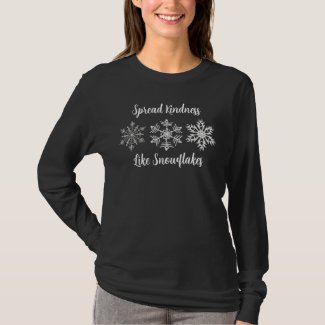
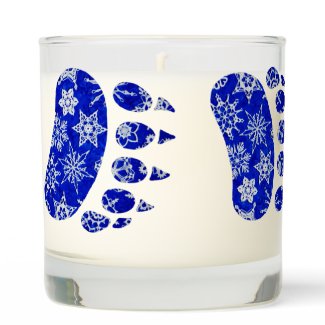
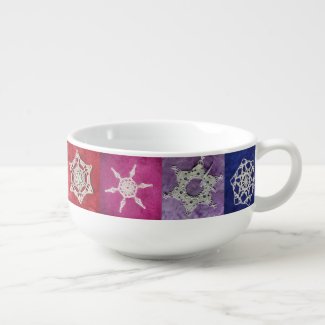

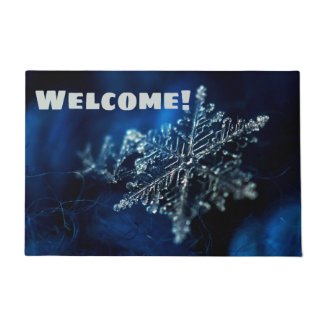
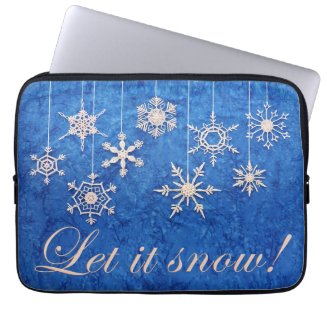
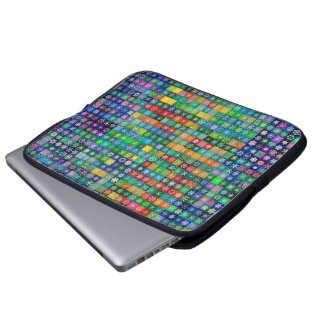
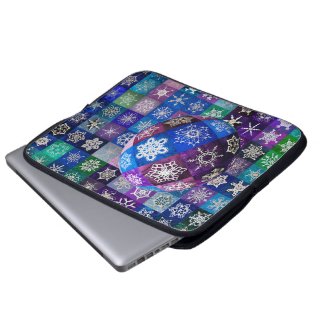















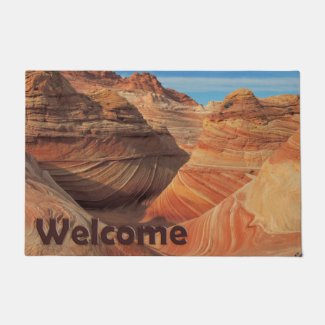
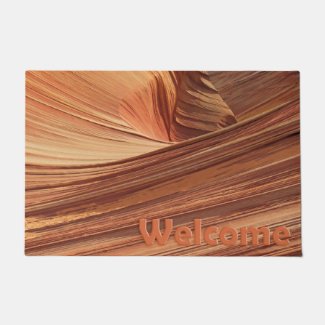

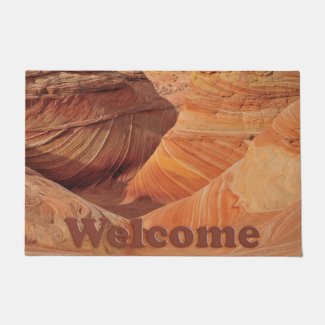

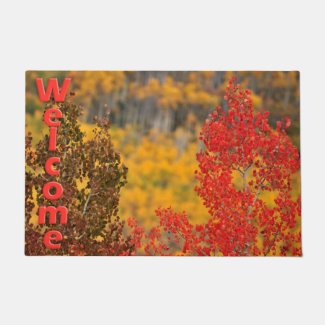


I knew it ... talent is your middle name. What a lovely dress and so beautiful embellished and trimmed. You're quite a gal!
ReplyDeleteI notice something in the V neckline also. Is that a snowflake or did you doctor up the pattern to make it fit?
ReplyDeleteI have 3 blouses that are too V'd for me and want something to go in that V so if you doctored the pattern to fit would you tell me how?
As always I enjoyed this week's snowflake very much. I do a lot of crocheting of other things but haven't found anything that makes me feel better than when I finish a snowflake!
Thanks
Me again! Is the snowflake in your top banner of your page have a pattern for it? If so, where can I find it?
ReplyDeleteThanks
Sweet!!! You are a super model! I doubt that Gisele Bündchen can design and sew her dresses...Kisses.
ReplyDeleteOooh, very pretty! I do love the motif before finishing it off. Looks very soft and beautiful.
ReplyDeleteYour dress looks so cute!
I love your new dress.
ReplyDeleteI so love the colors in your dress!..as well as that flower in the first photo..stunning!
ReplyDeleteGreat reading :-) We went camping up in Leadville not that long ago. There was a bike ride going on and I told Dale I wonder if Snowcatcher and Lizard are here. LOL. We love going up there. Did you hear they are going to reopen the mine? Lots of jobs and I guess really good for the town. Yay! Love the pictures in your pretty dress. Made me smile. Lizard did do good but, he had a pretty model to work with. :-)
ReplyDeleteThank you, everyone! Anne and Unique2wh0, you made me blush!
ReplyDeleteBrenda, the neckline snowflake is the Columbine Mine Snowflake, ended at Round 6. I didn't need the full-size snowflake to bring the neckline up to comfortable. And the snowflake in the banner (the one with the hearts) is the Century Snowflake, and you may find the instructions in the index in the right-hand column.
Beautiful VIOLET columbine. (I'm learning!)
ReplyDeleteThe sleeve motif with the fabric cut away underneath is gorgeous. And the trim! Perfectly balanced and so feminine.
Love the modelling shots too. Twirly skirts are the best.
P.S. Almost forgot to say the snowflake is lovely. But they always are.
Love the snowflake and the dress! Wow, riding in the 2-mile high city. Great time of year to be in Leadville.
ReplyDeleteRenee
Love, love, love that first columbine photo! Wow! Just gorgeous. :)) And, I'm pretty nuts over the dress, too!
ReplyDeleteWhat a gorgeous dress! Amasing!
ReplyDeleteThe first photo is stunningly beautiful!
ReplyDeleteIntricate, delicate, beautiful dress and *stunning* model! You look wonderful. So happy, so healthy and so delightfully footloose in that dress...
ReplyDeleteGreat job with the photo shoot, Lizard! It's amazing how a girl will smile for the camera when the right man is holding it. :)
I love the columbines, and your dress is absolutely stunning. I don´t have any dresses. But if I had that oen I would proudly wear it. :)
ReplyDeleteThis is so beautiful!!! You never cease to amaze me!!! You are so creative and I am so grateful that you are generous enough to share. Thank you so much!!!!
ReplyDeleteI love your skirt / dress blog you inspire me! So ... I am using an edging to put on my girl's skirts. I had a thought about writing patterns that makes the chore easier for me; so I will pass this on to you. I use the recorder on my iPhone & transfer it to my laptop, via uploading it! The iPhone is so much smaller, portable & easier to handle. Hope this helps =)
ReplyDelete~Deb